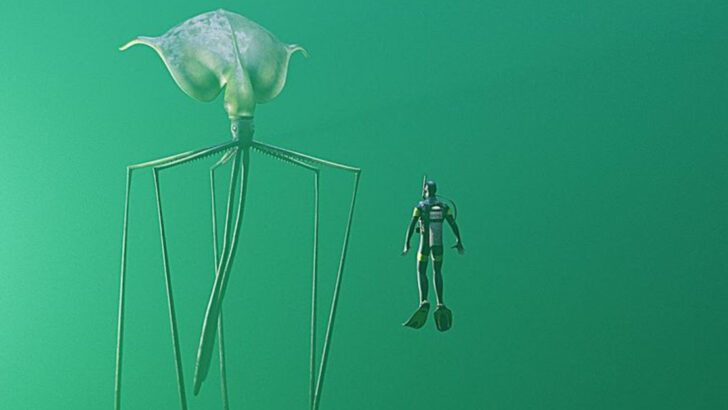There are monsters in the ocean—and they’re very real. With eyes the size of dinner plates and tentacles lined with hooks, these deep-sea giants look like something out of a sailor’s nightmare. But they’re not legends. They’re lurking in the dark, cold waters of our planet right now. Some are longer than buses. Others can vanish in a cloud of ink before you even know they’re there. And a few? We’ve only caught glimpses—snatched by deep-sea cameras or pulled from the belly of a whale. These aren’t your average calamari. These are the titans of the sea. And they’re more mysterious—and massive—than you ever imagined.
Colossal Squid
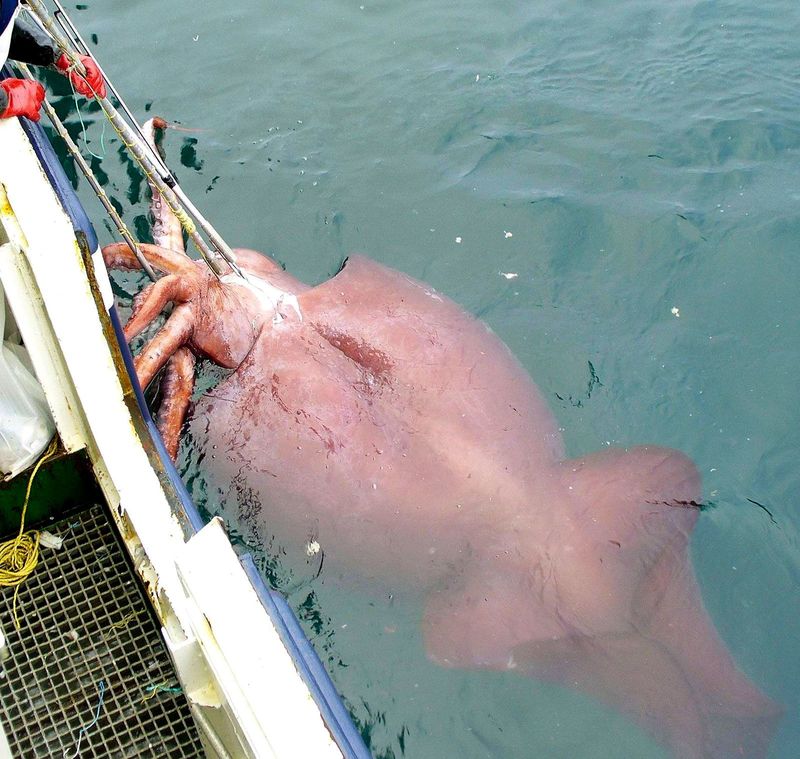
In the shadowy depths of the Antarctic waters, the colossal squid reigns supreme. Recognized as the largest squid species by mass, this marine giant can weigh up to 1,500 pounds. Its immense eyes, the size of dinner plates, enable it to detect faint light in its deep-sea habitat.
With tentacles armed with swiveling hooks, it catches prey with remarkable efficiency. This elusive creature remains a mystery, as few specimens have been studied. Did you know? The colossal squid possesses the largest eyes in the animal kingdom, a testament to its extraordinary adaptations.
Giant Squid

The giant squid, a true leviathan of the sea, has long been the stuff of legends. Measuring up to 43 feet in length, its elongated body is both graceful and formidable. With eyes the size of soccer balls, it is equipped for life at immense depths.
Its tentacles, lined with suction cups, help it capture its prey, which includes fish and other squid species. Famously elusive, the giant squid inspired tales of sea monsters. Interestingly, it was only recently that scientists captured footage of this magnificent creature in its natural habitat.
Humboldt Squid
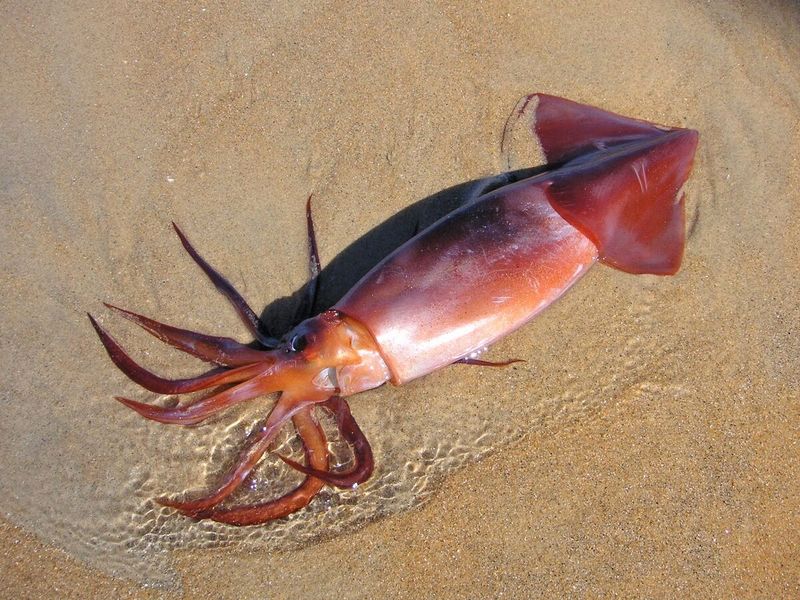
Known as the “red devil” for its fiery coloration and aggressive nature, the Humboldt squid is a force to be reckoned with. Reaching lengths of up to 6 feet, this squid is found in the warm waters of the eastern Pacific Ocean.
It is a voracious predator, often hunting in large groups known as shoals. With sharp beaks, it can easily tear through flesh. Despite its fearsome reputation, the Humboldt squid plays a vital role in its ecosystem. Fun fact: It can rapidly change color, a behavior used for communication and camouflage.
Dana Octopus Squid
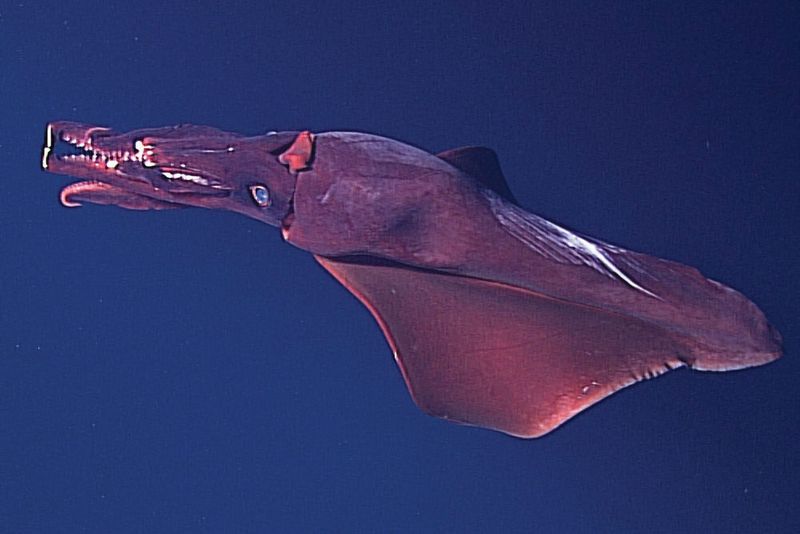
In the cloak of darkness, the Dana octopus squid reveals its glowing beauty. This intriguing species, growing up to 6.6 feet, is equipped with bioluminescent organs that light up the ocean depths.
These lights serve multiple purposes, from attracting prey to communicating with potential mates. Unlike others, it has unique fins that aid in maneuverability. Its fascinating ability to produce light makes it a subject of scientific interest. Did you know? The Dana octopus squid is named after the Danish research vessel Dana, which discovered it during a marine expedition.
Magnapinna Squid
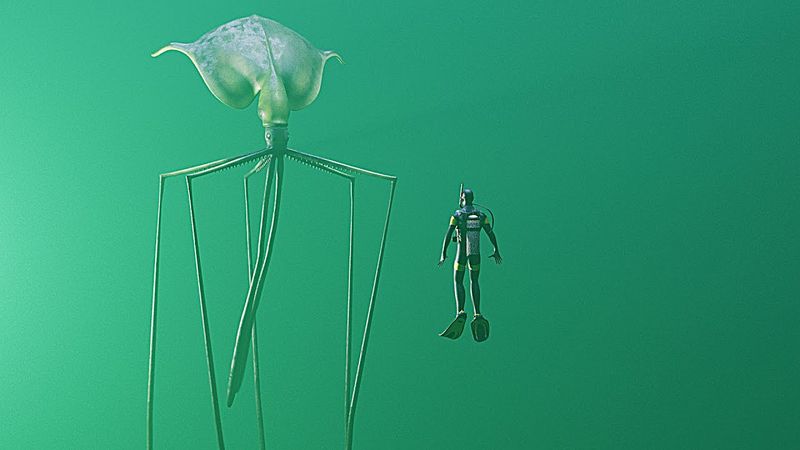
With its ghostly appearance, the Magnapinna squid captures the imagination. Characterized by its extraordinarily long arms and fins, it drifts through the ocean with an ethereal grace.
Reaching lengths of up to 23 feet, this elusive creature is rarely seen by humans. Its unique morphology has puzzled scientists, as its long appendages extend at right angles. Despite its delicate appearance, little is known about its diet or behavior. Fascinatingly, the Magnapinna squid is often referred to as the “bigfin squid” due to its remarkable appendages.
Japanese Flying Squid
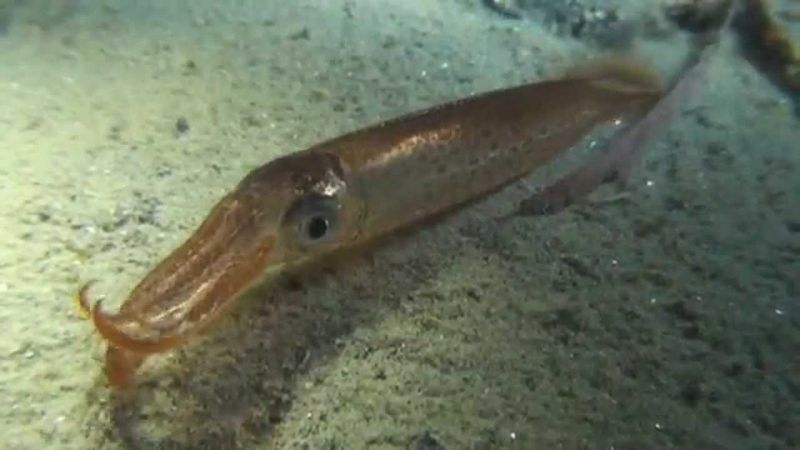
Not many squids can take to the air, but the Japanese flying squid defies expectations. Capable of gliding above the ocean surface, this squid reaches speeds of up to 11.2 meters per second.
Growing up to 1.6 feet, it embarks on extensive migrations across the North Pacific. Its agility and speed make it a formidable hunter, preying on small fish and crustaceans. Besides its aerial escapades, it is commercially fished and forms a staple in various cuisines. Unique fact: Its ability to glide is a defense mechanism against predators.
Robsonella Squid
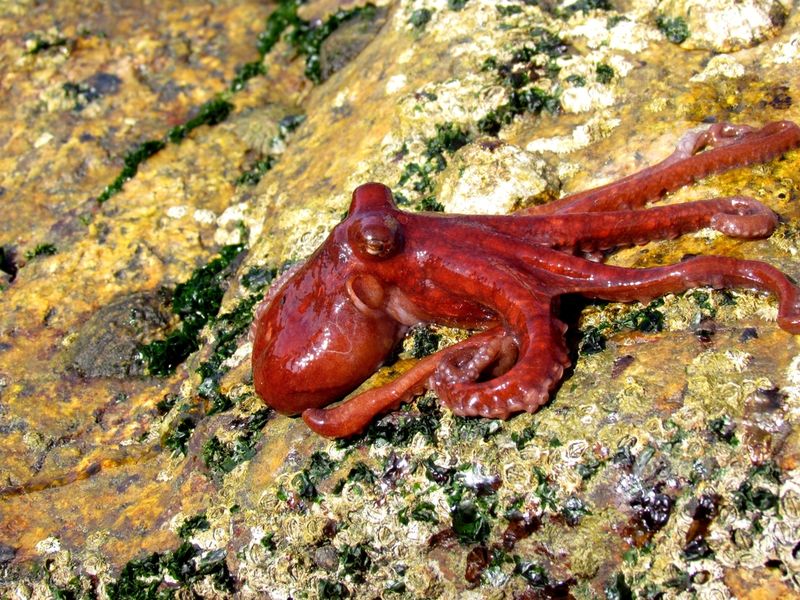
In the vibrant coral reefs, the Robsonella squid makes its home. Unlike its gigantic relatives, this squid is small, rarely exceeding 8 inches.
Its vivid coloration provides both camouflage and communication with other marine creatures. Its small size belies its predatory nature, as it feeds on small fish and invertebrates. It is a master of disguise, avoiding predators with its chameleon-like abilities. Interestingly, it is one of the few squid species that exhibit reef-dwelling behavior, making it a subject of ecological studies.
California Market Squid
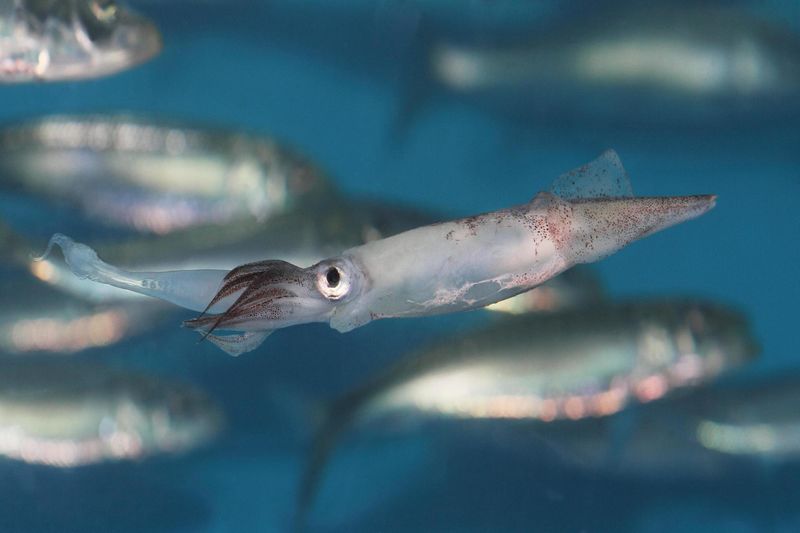
The California market squid, while not the largest, plays a significant role in marine ecosystems. Typically reaching 1 foot in length, it forms massive schools in the Pacific Ocean.
It is a crucial food source for numerous marine species, including whales and seabirds. Its rapid life cycle and high reproductive rate make it resilient to fishing pressures. This squid is commercially significant, harvested extensively for food and bait. Fun fact: Its ability to change colors is an adaptation for communication and predator avoidance.
Neon Flying Squid
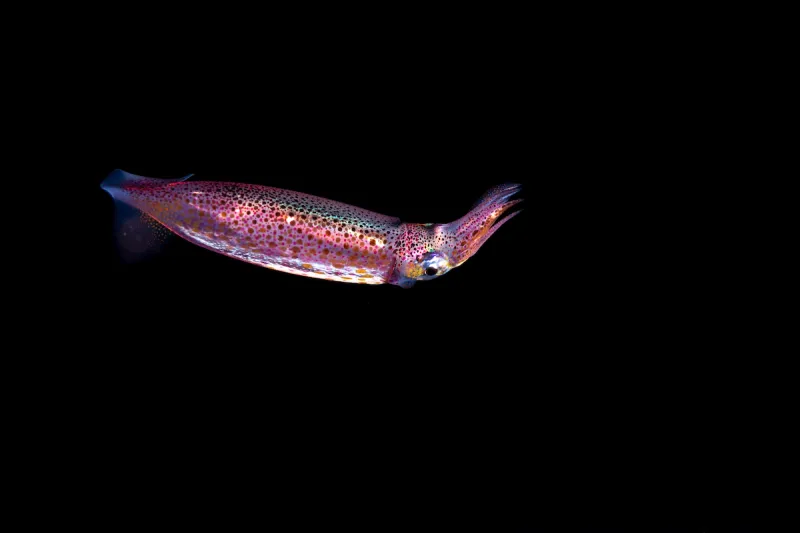
The neon flying squid, a marvel of the sea, is known for its luminescent qualities. Growing up to 3 feet, it is a vital part of the North Pacific marine food web.
It is well-adapted to life both in and above the water, using jet propulsion to leap into the air. Its glowing body is not just for show; it serves as a mechanism to confuse predators. This squid is both a predator and prey, playing a dual role in its ecosystem. Did you know? It can travel great distances during its seasonal migrations.
Arrow Squid
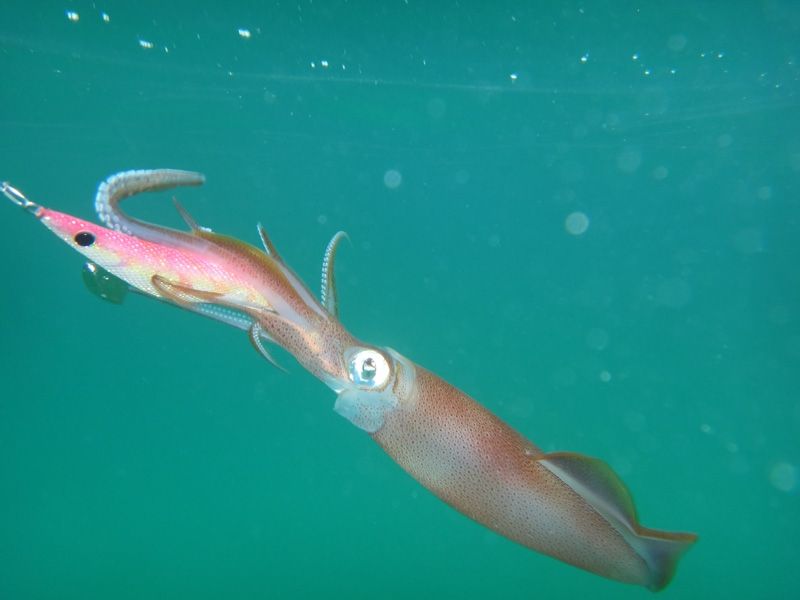
The arrow squid, true to its name, moves with incredible speed and precision. Its streamlined body allows it to dart through the water with ease, reaching lengths of up to 2 feet.
This agile predator feeds on small fish and plankton, playing a significant role in its ecosystem. Its quick movements make it a challenging target for predators. Interestingly, it is known for its ink-squirting defense mechanism, used to evade capture. The arrow squid’s adaptability makes it a fascinating subject of marine research and study.
Jumbo Squid
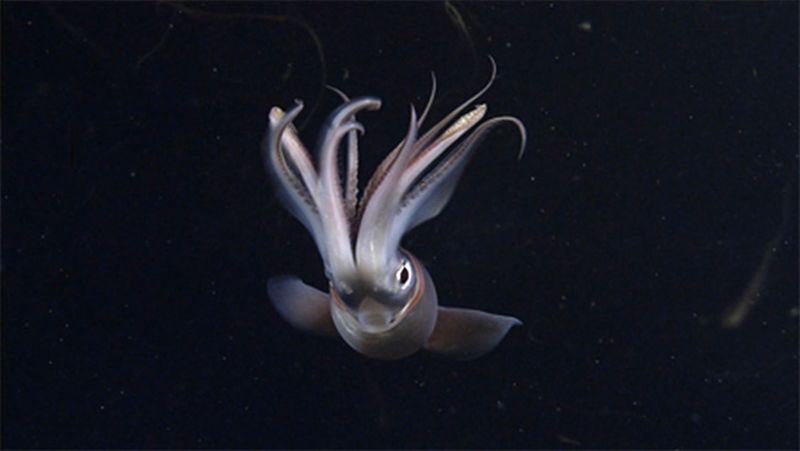
The jumbo squid, aptly named for its impressive size, dominates the deep ocean. Growing up to 7 feet in length, it is a formidable predator. Its robust body and powerful tentacles make it adept at capturing prey.
Found in the Eastern Pacific, it is known for its aggressive hunting behavior and migratory patterns. This squid’s adaptability to different depths has fascinated scientists. A peculiar fact: The jumbo squid can change its body color rapidly, a trait used for communication and hunting. Its presence indicates the health of marine ecosystems.

